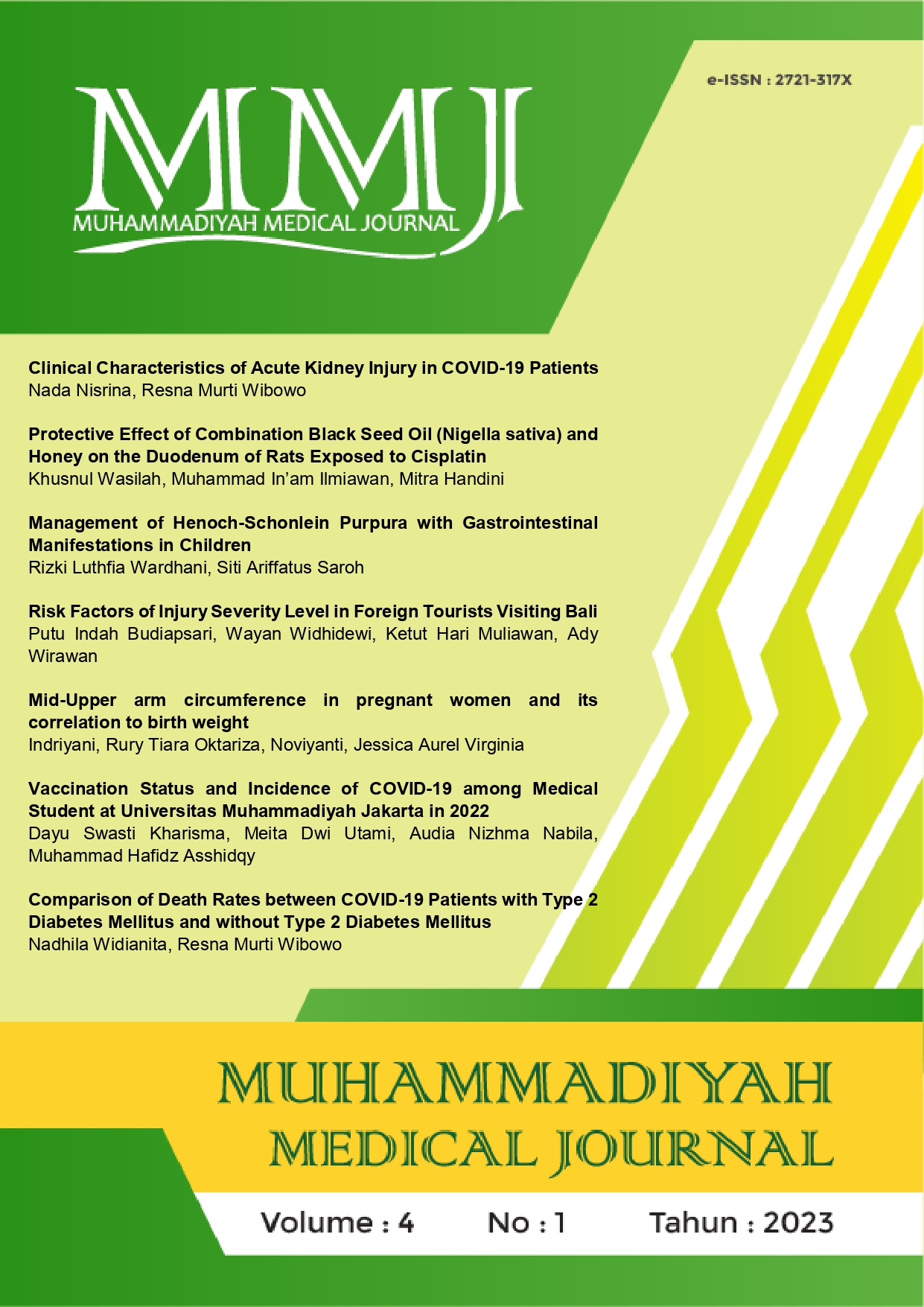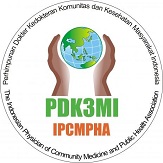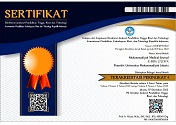Clinical Characteristics of Acute Kidney Injury in COVID-19 Patients
DOI:
https://doi.org/10.24853/mmj.4.1.1-7Keywords:
acute kidney injury, clinical characteristics, COVID-19, prevalencesAbstract
Background: Coronavirus Disease 2019 (COVID-19) is one of the infectious diseases that exist in Indonesia. Not only infects the lungs, but this virus can also infect other organs such as the kidneys. In addition, the process of viral infection causes cell hypermetabolism, which can increase the workload of the kidneys in excreting metabolic waste. In the end, the damage caused by the virus can cause Acute Kidney Injury (AKI). It is necessary to know the prevalence and characteristics of this event. Purposes: This study aims to provide an overview of AKI's prevalence and clinical features in COVID-19 patients. Methods: This was a descriptive study that used patient medical records for the period April-September 2021. The univariate analysis data showed a characteristic frequency distribution of age, gender, comorbidity, hospitalization duration, and urea creatinine rate. Results: The incoming samples based on the inclusion and exclusion criteria were 44 samples. In COVID-19 patients, complications of AKI were found in adults, as much as 68.2% of both men and women had a percentage of 50%, the most common comorbid was hypertension 30.8% with a hospitalization duration of 1-10 days 43.2% and an average increase in urea 79.68 mg/dL and creatinine average 2,859 mg/dL. Conclusion: Based on patient characteristics, the results showed that more COVID-19 patients with acute kidney injury complications occurred in adult patients, with no difference in prevalence between males and females, with comorbid hypertension and length of hospitalization less than ten days.References
Syahniar R, Purba MB, Bekti HS, Mardhia M. Vaccines against coronavirus disease: target proteins, immune responses, and status of ongoing clinical trials. Vol. 14, Journal of Pure and Applied Microbiology. Journal of Pure and Applied Microbiology; 2020. p. 2253–63.
Kemkes RI. Situasi Terkini Perkembangan COVID-19 (8 Agustus 2022). 2022;1–4. Available from: https://covid19.kemkes.go.id/document/download/ cover?category= situasi-penyakit-infeksi-emerging
Syahniar R, Kharisma DS. SARS-CoV-2 vaccine challenge based on spike glycoprotein against several new variants. Vol. 11, Clinical and Experimental Vaccine Research. Korean Vaccine Society; 2022. p. 173–83.
Jonathan B, Yong C, Dermawan K. Profil Fungsi Ginjal Pasien COVID-19 Derajat Berat dengan Acute Kidney Injury terhadap Mortalitas di Unit Perawatan Intensif.
Awdishu L, Wu SE. Critical Care Self-Assessment Program CCSAP 2017. Book 2 Renal/Pulmonary Critical Care. Critical Care Self-Assessment Program CCSAP 2017 Book 2 Renal/Pulmonary Critical Care. 2017;7–26.
Gaut JP, Liapis H. Acute kidney injury pathology and pathophysiology: A retrospective review. Clin Kidney J. 2021;14(2):526–36.
Makris K, Spanou L. Lesion Renal Aguda Otro. Clinical Biochemist Reviews. 2016;37(2):85–98.
Irsan A, Mardhia M, Rialita A. Evaluation of Humoral Response of Emergency Unit Healthcare Workers after Third Dose of COVID-19 Vaccination. Muhammadiyah Medical Journal. 2022 Jun 2;3(1):27.
Wahab R, Polii E, Sugeng C. Pneumonia COVID-19 dengan Gangguan Ginjal Akut. Available from: https://ejournal.unsrat.ac.id/index.php/eclinic
Thongprayoon C, Hansrivijit P, Kovvuru K, Kanduri SR, Torres-Ortiz A, Acharya P, et al. Diagnostics, risk factors, treatment and outcomes of acute kidney injury in a new paradigm. J Clin Med. 2020;9(4):1–23.
Chawla LS, Kimmel PL. Acute kidney injury and chronic kidney disease: An integrated clinical syndrome. Kidney Int [Internet]. 2012;82(5):516–24. Available from: http://dx.doi.org/10.1038/ki.2012.208
Melyda. Diagnosis dan Tatalaksana Acute Kidney Injury (AKI) pada Syok Septik. Cdk-259. 2017;44(12):907–8.
Sumber P, Perdesaan D, Kearifan D, Berkelanjutan L, Indriani OV, Siswandari W, et al. Prosiding Seminar Nasional dan Call for Papers Hubungan Antara Kadar Ureum, Kreatinin dan Klirens Kreatinin Dengan Proteinuria Pada Penderita Diabetes Mellitus. 2017.
Kellum JA, Lameire N, Aspelin P, Barsoum RS, Burdmann EA, Goldstein SL, et al. Kidney disease: Improving global outcomes (KDIGO) acute kidney injury work group. KDIGO clinical practice guideline for acute kidney injury. Vol. 2, Kidney International Supplements. Nature Publishing Group; 2012. p. 1–138.
Ofori DA, Anjarwalla P, Mwaura L, Jamnadass R, Stevenson PC, Smith P, et al. Molecules [Internet]. 2020;2(1):1–12.
Haq AD, Nugraha AP, Wibisana IKGA, Anggy F, Damayanti F, Syifa RRDM, et al. Faktor – Faktor Terkait Tingkat Keparahan Infeksi Coronavirus Disease 2019 (COVID-19): Factors Related To The Severity Of Coronavirus Disease 2019 (COVID-19) Infection: A Literature Review. JIMKI: Jurnal Ilmiah Mahasiswa Kedokteran Indonesia. 2021;9(1):48–55.
Diao B, Wang C, Wang R, Feng Z, Zhang J, Yang H, et al. Human kidney is a target for novel severe acute respiratory syndrome coronavirus 2 infection. Nat Commun [Internet]. 2021;12(1):1–9. Available from: http://dx.doi.org/10.1038/s41467-021-22781-1
Nasution SH, Syarif S, Musyabiq S. Penyakit Gagal Ginjal Kronis Stadium 5 Berdasarkan Determinan Umur , Jenis Kelamin , dan Diagnosa Etiologi di Indonesia Tahun 2018 Chronic Kidney Failure Disease Stage 5 Based on Determinants of Age , Gender , and Diagnosis of Etiology in Indonesia in 201. JK Unila. 2020;4(2):157–60.
A S, Fauzar, R K, A K. Hubungan Lama Rawat Inap dengan Usia dan Komorbiditas Pasien COVID-19 di Semen Padang Hospital dari Maret hingga Juli 2020. Health and Medical Journal [Internet]. 2022;4(1):35–9. Available from: https://jurnal.unbrah. ac.id/index.php/heme/article/view/933
Putri FM, Ratih ID. Analisis Survival Lama Waktu Sembuh Pasien COVID-19 di Rumah Sakit Lapangan Kogabwilhan II Surabaya. Jurnal Sains dan Seni ITS. 2022;11(2).
Fabrizi F, Alfieri CM, Cerutti R, Lunghi G, Messa P. COVID-19 and acute kidney injury: A systematic review and meta-analysis. Vol. 9, Pathogens. MDPI AG; 2020. p. 1–16.
Downloads
Published
Issue
Section
License
Authors who publish in the Muhammadiyah Medical Journal agree to the following terms:
- Authors retain copyright and grant Muhammadiyah Medical Journal right of first publication with the work simultaneously licensed under a Creative Commons Attribution Licence that allows others to adapt (remix, transform, and build) upon the work non-commercially with an acknowledgement of the work's authorship and initial publication in Muhammadiyah Medical Journal.
- Authors are permitted to share (copy and redistribute) the journal's published version of the work non-commercially (e.g., post it to an institutional repository or publish it in a book), with an acknowledgement of its initial publication in Muhammadiyah Medical Journal.








